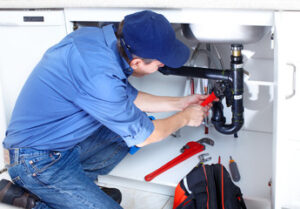Plumbers install, repair, and maintain the pipes and fixtures that provide water, gas, and waste disposal in residential and commercial buildings. They use their skills to listen to customers’ complaints, determine the source of the issue, and make the necessary repairs.

Becoming a plumber is a fulfilling career that pays above the national average wage and offers real job security. It can also be a demanding profession that requires physical stamina and manual dexterity. Visit Website to learn more.
Whether your faucet is leaking or you simply want to replace the handle for a new design, removing and replacing a faucet handle is a relatively simple DIY project that most homeowners can tackle. However, before you start taking apart the handle, it is important to shut off the water supply. Look under the sink for the shut-off valves, and turn them clockwise to close them. This will prevent any unexpected water flow from the pipes while you are working on the project.
Once the water is off, it’s time to start removing the old handle. To do this, first pry off the decorative cap (usually plastic) from the top of the handle. This should expose a screw that holds the handle in place. Depending on the style of your faucet, this screw may be hidden by another decorative cover or even by the base of the handle itself. If this is the case, use a small flathead screwdriver to remove any other decorative covers that may be present.
Next, remove the handle screw by turning it counterclockwise with a screwdriver. This should come off fairly easily, but you may need to apply a bit of pressure in order to get it loose. You may also find that there is a small allen set screw underneath the decorative cap, which can be removed with an Allen wrench. Once both of these screws are removed, the handle should pull right off of the faucet body.
If the handle is stuck, it is likely because of a buildup of corrosion or grime. A general degreaser and a rag can often be enough to wipe away any buildup, but if the screw is truly rusted or stuck, you may need to spray some penetrating oil and let it soak for a while.
If you’re still having trouble, try tapping the handle with a rubber mallet to free it. It’s important not to force the handle, as this could damage the valve stem or cause the O-rings to break. If you continue to have trouble, it may be best to consult an expert plumber for more specific advice based on your situation.
Remove the Valve Stem Assembly
If the handle or spout of your outdoor faucet is leaking, you may need to remove the valve stem assembly. This is the most difficult and time consuming step in the process, but it is essential to getting your leaky faucet working again.
Before proceeding with this step, turn off your water supply by closing the shut-off valve located under or behind your faucet. This will prevent any accidental flooding or water damage during the repair process.
Unscrew the handle from the stem with a wrench, then remove the packing nut that holds the valve stem in place. Soak the stem in white vinegar or a commercial product designed to dissolve lime and other deposits from faucets. Rinse the stem thoroughly and allow it to dry completely before continuing with your repair. If the stem is damaged, bring it with you to a plumbing supply store to ensure that you purchase the correct replacement part. Be sure to get a new washer as well, since the old one is likely worn out and cracked.
Replace the Top Cap
Plumbers install, repair, and maintain the pipes and fixtures that facilitate water, gas, and waste disposal in residential and commercial settings. Their responsibilities include inspecting existing plumbing systems, testing water pressure levels, and locating and fixing leaks and blockages. They also install new taps, toilets, showers, and dishwashers; connect gas lines; and power flush waste systems.
Many people pursue a career as a plumber after earning a high school diploma or equivalent and completing a trade school program that teaches basic skills like local plumbing codes and regulations, blueprint reading, and safety practices. Some plumbers choose to further their education by enrolling in an apprenticeship program that combines classroom instruction with on-the-job training. These programs last from four to five years and offer a combination of hands-on work experience and paid classroom instruction.
In addition to having a strong background in plumbing, plumbers need a variety of other soft skills to succeed in their careers. These include critical thinking, the ability to weigh different solutions to a problem, and verbal communication. They also need to be physically able to lift heavy equipment and tools.
A plumber’s work environment varies depending on the type of plumbing system they are working on. For example, in residential settings, they may need to travel between homes to perform repairs and installations. In commercial and industrial environments, they may be responsible for installing plumbing systems in large buildings with multiple occupants, such as office buildings, hospitals, and manufacturing plants. These projects require them to collaborate with architects and construction teams to ensure that plumbing is seamlessly integrated into building projects.
Because plumbers frequently work with sewage and drainage systems, they are at risk of exposure to dangerous microbes. These bacteria can be excreted in faecal matter or vomit, or enter through cracks in drain pipes and leaking faucets. Plumbers who are exposed to these pathogens are at risk of developing infections, such as cholera, typhoid, hepatitis, and polio.